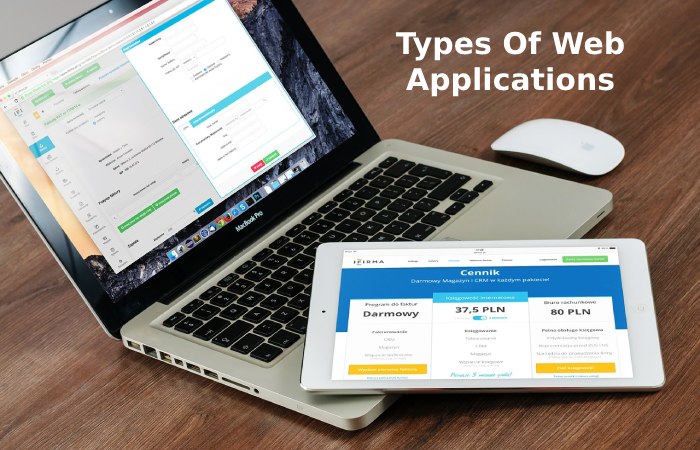Table of Contents
What is a Web Application?
Web Application is a website that, after being treated by a programmer, has been adapted so that users can access it through a web server using the Internet through a browser, be it Chrome, Mozilla, Microsoft Edge, etc.
In simple words, TechTarget mentions that “a web application is an application program that is stored on a remote server and delivered through the browser interface”.
Today, the vast majority of times you access a web application is through your cell phone. It is a fairly common mistake to think that a web application is the one that is on the screen of your mobile when, in reality, they are direct accesses you reach the web apps through a browser.
Difference Between Web Page And Web Application
When it comes to establishing the difference between a web page and a web application, it is important to know the main characteristics of each one.
Inactivity Vs. Dynamism
A web page is a platform that contains static electronic information. It can contain text, images, sounds, videos, links, etc. It does not have many functionalities since its main function is to display the information it contains, although you may come across calls to action, such as forms or newsletter subscriptions.
Meanwhile, a web application is a set of dynamic pages whose content is determined after a user has interacted with it. The main objective of the web app is that the user can perform one or more tasks. In addition, web applications can be found both in banks and government institutions and in social networks or shopping carts.
Multimedia Content Vs. Interaction
Suppose you enter a website and you can only see the information. In that case, you are most likely in front of a web page because that information is the same that will be displayed for everyone, whether you enter it, a friend or a family member. They are generally photo galleries, blogs or any page whose objective is to share content.
Now, if you enter a website and interact with it, create a profile, add products to a cart or put items in favourites, it is a sign that you are in front of a web application.
Let’s mull an example of a web application: Instagram. If you log into your account, what you see will depend on the people you follow. Their photos will appear, and you will be able to like, save or comment on them. Therefore, someone else’s Instagram home will be different from yours because the interaction with the web app will be different.
What is A Web Application For?
Benefits Of Using Web Applications And Implementing Them In Your Work. Here Is A List:
1. Internal Management
Some business can use them to control their stock, or some companies can manage their economy. There are even web apps to split expenses if you go on vacation with friends.
2. User Service
We already said it. Web apps record the activity of who uses them. It will be in the hands of who manages the app, use this data responsibly and analyze it to offer a better service.
3. Communication With Users
Another advantage of web applications is that you can add a chat function to ask you questions, which improves the quality of service. You can also make offers through notifications or offer a discount after completing the first purchase through the app. If you are selling a product, it is a good way to build user loyalty.
4. Universally Known Languages
Among the benefits of web apps mentioned above, this one stands out since they can be opened using any device or operating system. Hence the importance of having a Wireframe UX template for iOS and Android and designing a web application that adapts to all digital interfaces.
How Does a Web Application Work?
Do you remember that web apps are user-oriented and show them content to interact with. That’s because web applications have a database installed in the cloud that is responsible for processing any activity you do within them to show you the content that interests you the most.
But is that database on your phone. The answer is no. Web applications are designed to save data in cloud storage outside of your device, so it does not take up space in your mobile memory.
When you request the data from the web application, your computer or cell phone connects to this cloud, and it is in charge of passing all the required information to it. As you can see, the operation of web applications is a huge process that takes place in just a few seconds. That’s why you can only access the web apps through a device connected to the Internet .
Types of Web Applications

Now that you know what a web application is and how it works, it’s time to see what web applications are and their different types:
1. Progressive Web App
You may also know it by the acronym PWA (progressive web app). But beyond the name, what is a Progressive Web App and what are its features.
Characteristics
The main feature is that it remains designed for mobile devices. Unlike web applications that are extensions of websites that adapt to mobile phones, these apps were born with smartphones in mind. Some examples of the progressive web app are Facebook, Instagram and Twitter.
- They can use the native features of mobile phones.
- It work without internet access—another notable difference from web apps.
- They progressively incorporate functions such as, for example, the notifications that appear in the upper left part of cell phones.
- They update very often. But that’s not why they become heavy. It would remain a problem since they use the phone’s functions, unlike web apps that store operator data in the cloud. Another feature is that they are lighter than the others.
2. Native Web App
Native apps are also built with mobile phones in mind, but these are heavier than progressive web apps. Another difference with web apps is that they cannot be accessed through a browser. You need to download and install it on your mobile device for it to work.
Characteristics
- They are found in the apps stores to be downloaded later by users. Among the most popular are Spotify, Amazon and Uber.
- Being heavier, some users prefer to disable updates because they do not have much space on their cell phone.
- They are not intended for all operating systems (iOS or Android). It is a difference that it maintains with web applications that can work on any device.

